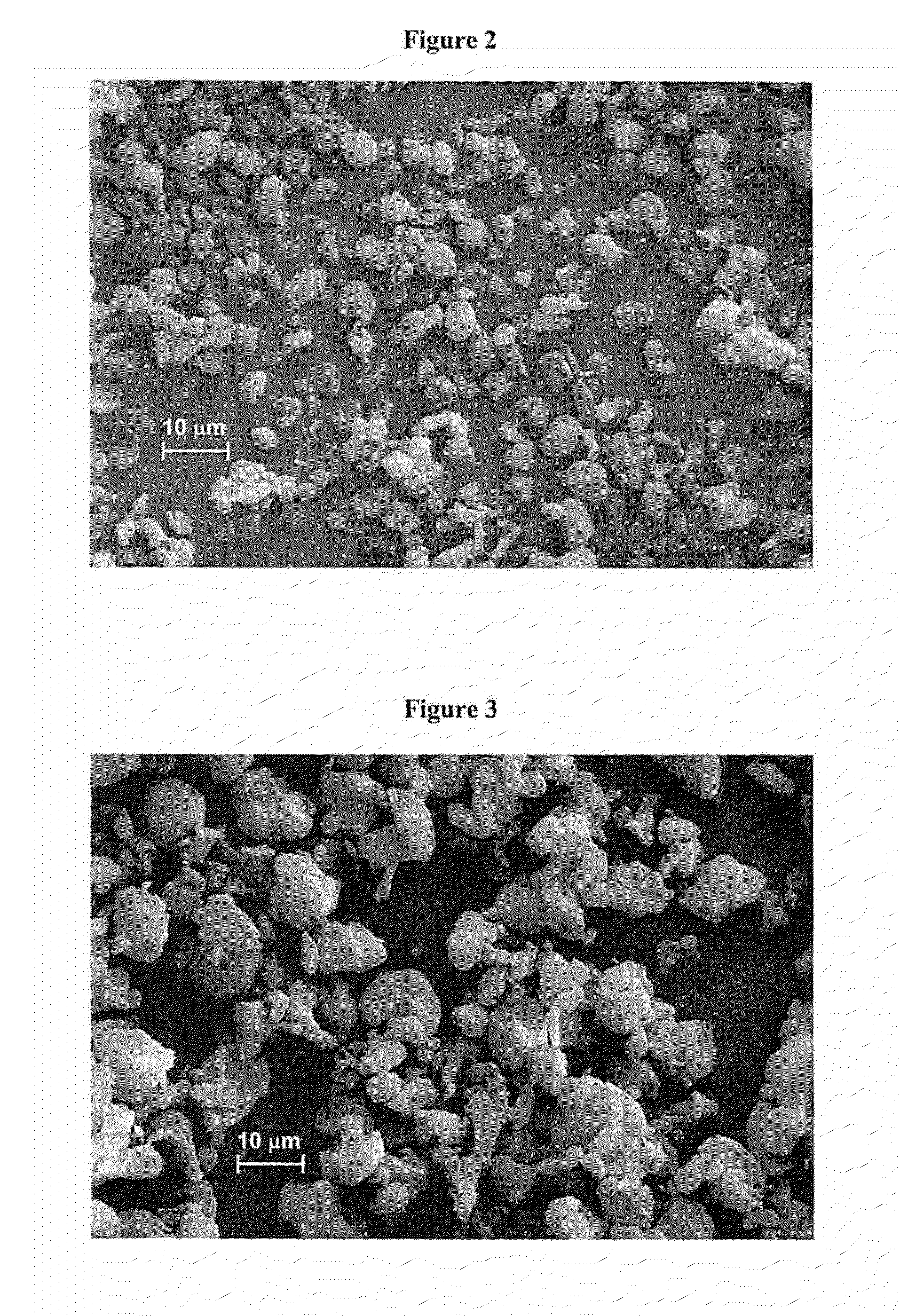Ultrafine Poly(phenylene ether) Particles and Compositions Derived Therefrom
a technology of phenylene ether and polyethylene ether, which is applied in the field of phenylene ether ultrafine particles and compositions derived therefrom, can solve the problems of complicated use of thermoplastics in the production of epoxy resins, and achieve the effects of reducing moisture absorption, improving epoxy resin toughness, and reducing dielectric properties
- Summary
- Abstract
- Description
- Claims
- Application Information
AI Technical Summary
Benefits of technology
Problems solved by technology
Method used
Image
Examples
examples
[0260]The materials used to prepare the compositions are listed in Table 2.
TABLE 2ComponentTrade name and SupplierPPEPoly(2,6-dimethyl-1,4-phenylene ether), CAS Reg. No.24938-67-8, having an intrinsic viscosity of 0.4 decilitersper gram, measured in chloroform at 25° C., and obtainedas PPO 640 resin from SABIC. (“0.4 IV PPE)Epoxy ResinDiglycidyl Ether of Bisphenol A (“DGEBPA”), 2,2′-[methylethylidenebis(4,1-phenyleneoxymethylene)]bisoxirane, CAS Reg.No. 001675-54-3, obtained from Dow ChemicalCompany as DER332.Hardener4,4′-diaminodiphenyl methane (“MDA”), CAS Reg.No. 101-77-9, obtained from Sigma Aldrich Co.
[0261]The particle size of the PPE samples and their designations are summarized in Table 3.
TABLE 3Mean Particle SizePPE(micrometer)PPE-A6.07PPE-B10.9PPE-C15.7PPE-D46.7PPE-E87.8PPE-F264.1
[0262]The ASTM and UL tests used to characterize the compositions of the present invention, and the comparative examples, are summarized below in Table 4.
TABLE 4TestDescriptionUn-notchedUn-notched...
example 16
[0291]The amount of PPE-A and PPE-B slurried in DGEBPA at ambient temperatures was 0, 5, 10, 15, 20, and 25 wt %. The effect of the slurried PPE-B and PPE-C on spindle viscosity at 24° C. appears in FIG. 13
[0292]Table 13 compares of the percent change in viscosity. Dissolved PPE results in huge increases in viscosity versus slurring the ultra-fine PPE in epoxy.
TABLE 13Comparison of changes in viscosityPercent Change in ViscosityExample BExample BComparativePPE, wt %PPE-APPE-BExample P52218155105553621151131001932201991776,8002539936619,911
[0293]Epoxy resins are the workhorses of the electronic industry. Important criteria for good dielectric materials are low dielectric constants (Dk, relative permittivity) and loss tangent (Df, dissipation factor). The effect of ultrafine PPE particles on dielectric properties was measured.
[0294]Dielectric constants and dissipation factors were measured at 23° C. according to IPC-TM-650-2.5.5.9. Test samples were in the shape of rectangular prisms ...
PUM
| Property | Measurement | Unit |
|---|---|---|
| mean particle size | aaaaa | aaaaa |
| mean particle size | aaaaa | aaaaa |
| mean particle size | aaaaa | aaaaa |
Abstract
Description
Claims
Application Information
 Login to view more
Login to view more - R&D Engineer
- R&D Manager
- IP Professional
- Industry Leading Data Capabilities
- Powerful AI technology
- Patent DNA Extraction
Browse by: Latest US Patents, China's latest patents, Technical Efficacy Thesaurus, Application Domain, Technology Topic.
© 2024 PatSnap. All rights reserved.Legal|Privacy policy|Modern Slavery Act Transparency Statement|Sitemap



